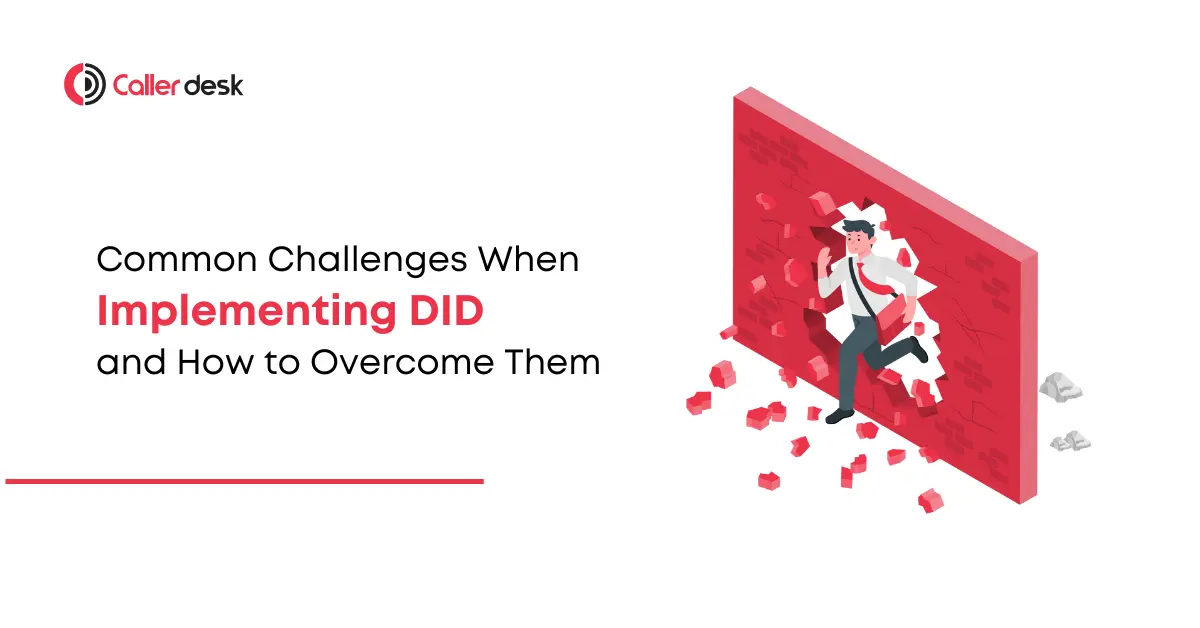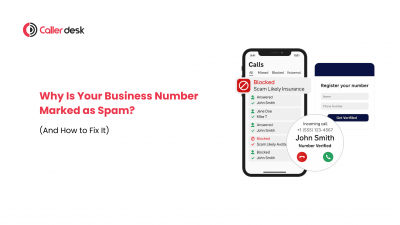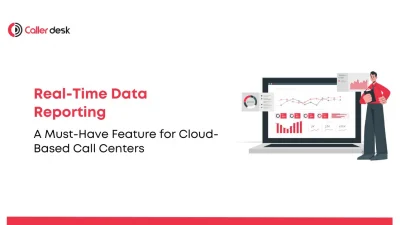Do missed calls and frustrated customers keep you up at night? What if your business could seamlessly connect every caller to the right person without delays or confusion? Direct Inward Dialing (DID) offers exactly that—a streamlined communication system where every department or team member gets their own number, ensuring no customer is left waiting.
Think about your current system: Are customers constantly being transferred? Are your team members wasting time fielding irrelevant calls? If you’ve ever wished for a better way to manage your business calls, DID might be the solution you need.
Let’s dive into the challenges businesses like yours face when implementing DID—and more importantly, how you can overcome them with ease.
1. Complex Configuration and Setup
Have you ever felt overwhelmed by tech that seems simple at first but quickly becomes complicated? That’s often how businesses feel when setting up a DID system. Routing calls to the right department might sound straightforward, but without the right tools, it can quickly turn into a logistical headache.
For example, imagine running a healthcare clinic where patients need to reach different departments like billing, appointments, or emergencies. If the setup isn’t precise, callers could end up in the wrong place, delaying critical care and causing frustration.
Here’s how you can simplify it:
- Partner with Experts: Choose a provider like Callerdesk with a reputation for making setup easy. Their intuitive dashboards let you configure routing in just a few clicks.
- Use Automation: Routing templates can save you hours of manual setup and reduce the chance of errors.
- Test Thoroughly: Run test calls for each number to make sure everything works as intended.
By taking these steps, you can set up your DID system confidently and avoid unnecessary complications.
2. Scalability Issues
Have you ever worried that your current system won’t keep up as your business grows? This is a common concern for businesses expanding their teams, locations, or services. A rigid DID system can become a bottleneck, making it harder to add new numbers or manage increased call volumes.
Picture this: Your logistics business is expanding into three new cities. Each branch needs its own local number to handle customer inquiries. Without a scalable system, setting up these numbers could take weeks, delaying your operations.
The good news? Scaling can be seamless:
- Choose Cloud-Based Solutions: With a cloud system like Callerdesk, you can add or remove numbers instantly—no waiting, no infrastructure changes.
- Flexible Plans: Pay only for what you need, and scale up as your business grows.
With a scalable solution, you can stay ahead of your communication needs and never miss a beat.
3. Integration with Existing Systems
Do you find your team juggling between tools, trying to make everything work together? A common challenge with DID systems is integrating them with CRMs or helpdesk platforms. Without proper integration, your team may spend more time copying data between tools than actually helping customers.
Imagine your sales rep answering a call and scrambling to find the caller’s details in a separate CRM system. This delay could frustrate both the customer and your employee.
Here’s how to make integration work for you:
- Use API-Enabled Systems: Callerdesk offers seamless API integrations with popular CRMs like Salesforce and HubSpot, so your team has all the information they need in one place.
- Centralize Communication: Look for systems that unify voice, chat, and email in a single platform.
With everything connected, your team can focus on what really matters—delivering great service.
4. Data Security Concerns
How confident are you that your customer data is safe? If your DID system isn’t secure, you risk exposing sensitive information, especially in industries like finance or healthcare where confidentiality is critical.
For instance, think about a bank handling customer inquiries about transactions or account details. Without proper encryption, these calls could be intercepted, leading to data breaches and lost trust.
Keep your data secure with these steps:
- Choose Encrypted Solutions: Callerdesk ensures all communications are end-to-end encrypted, protecting sensitive data.
- Stay Compliant: Work with a provider that adheres to industry standards like GDPR and ISO certifications.
- Regular Security Audits: Proactively identify and address vulnerabilities to keep your system safe.
When your customers know their information is secure, their trust in your business will only grow.
5. High Initial Costs and Maintenance
Does the thought of upfront costs make you hesitate? Traditional DID systems can come with a hefty price tag for hardware and ongoing maintenance, making them a tough sell for smaller businesses.
Imagine being a startup trying to allocate resources wisely. Spending thousands on hardware for a DID system might feel like a luxury you can’t afford.
The solution? Think cloud:
- Go Cloud-Based: Cloud telephony eliminates the need for expensive hardware and offers low-cost subscription plans.
- Maximize ROI: Focus on the long-term benefits, like fewer missed calls and higher customer satisfaction.
Callerdesk’s affordable, scalable solutions make it easy for businesses of any size to enjoy the perks of DID without breaking the bank.
6. Caller ID and Routing Issues
Have you ever called a business and felt like you were talking to the wrong person? Caller ID inaccuracies and routing mistakes can frustrate customers and harm your reputation.
Imagine your customer calling technical support but being routed to billing instead. Not only does this waste their time, but it also creates a negative impression of your business.
Here’s how to prevent these issues:
- Monitor Continuously: Callerdesk’s real-time monitoring tools let you spot and fix routing errors before they impact customers.
- Set Up Backup Routes: Ensure calls are redirected during high traffic or system downtime.
When your system works flawlessly, your customers will notice—and appreciate—it.
7. Training and Adaptation for Staff
Do your employees resist new technology? Switching to a DID system can feel intimidating for teams used to traditional phone setups. Without proper training, even the best system can fall flat.
Think about your customer service team learning to handle automated routing. Without guidance, they might struggle to manage calls efficiently, leading to delays and frustration.
Help your team succeed with these tips:
- Host Training Sessions: Teach employees how to use the system and make the most of its features.
- Simplify the Interface: Callerdesk’s intuitive design makes it easy for staff to adapt quickly.
- Provide Ongoing Support: Be available to answer questions and offer refresher training when needed.
When your team is confident, your customers will notice the difference.
Your DID Implementation Checklist
- Assess Your Needs:
- Identify which departments or employees need unique numbers.
- Decide between local or toll-free options based on your audience.
- Partner with the Right Provider:
- Choose a provider like Callerdesk with scalable, secure, and integrated solutions.
- Set Up and Test:
- Assign numbers, configure routing, and test every setup.
- Integrate Systems:
- Connect DID with your CRM and other platforms for streamlined workflows.
- Train Your Team:
- Ensure staff is comfortable and confident using the new system.
- Monitor and Improve:
- Use real-time monitoring to catch and fix issues quickly.
Take Action Today
What’s holding your business back from better communication? With Direct Inward Dialing (DID), you can reduce inefficiencies, enhance customer satisfaction, and empower your team to perform their best.
Ready to Get Started?
Contact Callerdesk today for a free consultation or demo to see how our DID solutions can transform your business.
Act Now: Sign up today and enjoy 10% off your first subscription plan!



